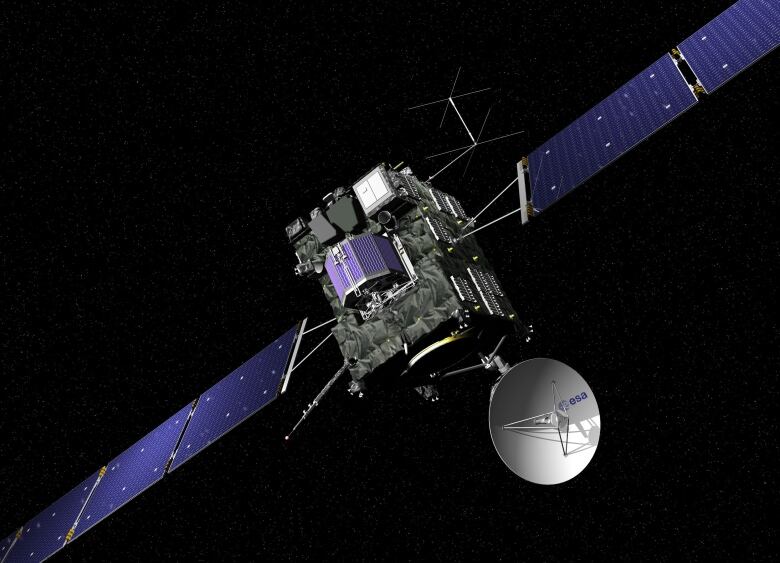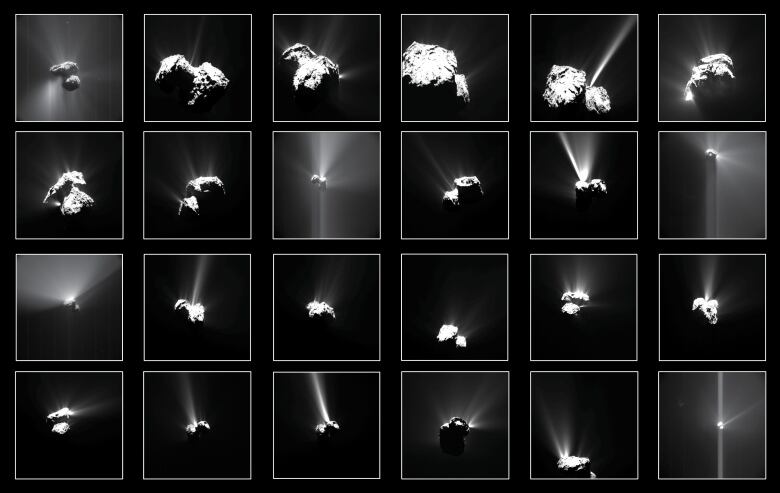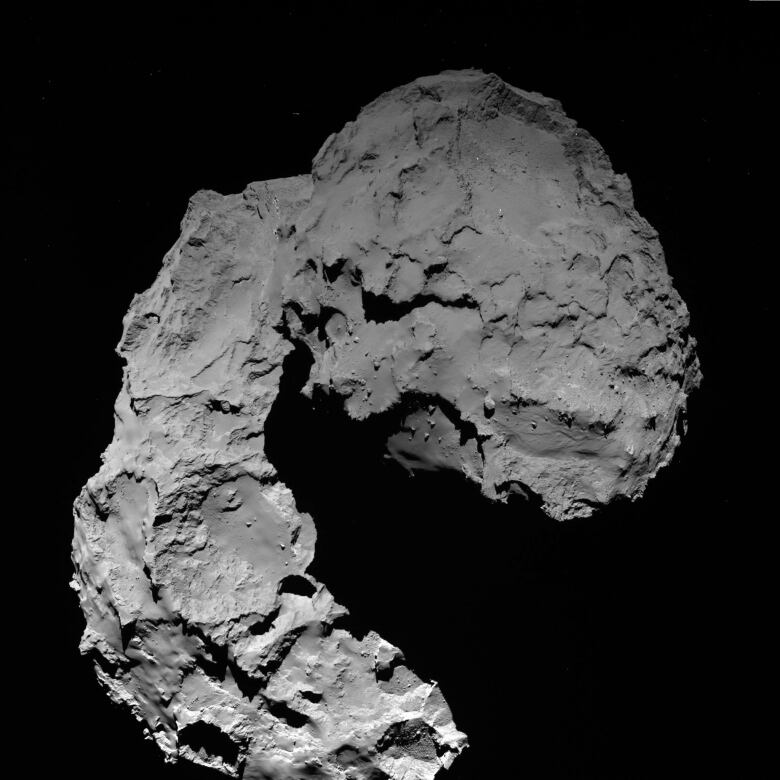Rosetta spacecraft crash lands into comet, ending 12-year mission
'Mission complete' as orbiter joins Philae, its lander and sidekick, on surface
Europe's comet-chasing space probe Rosetta performed its final task Friday, dipping out of orbit for a slow-motion crash onto the icy surface of the alien world it's been following for more than a decade.
The probe was launched in 2004 and took a decade to reach comet 67P/Churyumov-Gerasimenko, where it released a lander in November 2014. It went silent after itstruck 67P at about 7:20 a.m. ET., its gradual descentmarked by a final series of tweets sent as the icy surface drew closer.
"Farewell Rosettta, you've done the job," said mission manager Patrick Martin. "That is space science at its best."

The European Space Agency steered the probe toward the four-kilometre-wide comet as slowly as possible (90 centimetres per second, roughly half walking speed)so it could take the unprecedented close-ups.
Because of the distance between the comet and Earth, confirmation of the impacttook about 40 minutes to reach ESA's mission control in Darmstadt, Germany.
The Rosetta spacecraft snapped amazing close-up photos on its final descent to a comet. https://t.co/AtenGgrJMf pic.twitter.com/2nJeeGBCWQ
—@CBCTechSci"This is the culmination of tremendous scientific and technical success," said mission manager Patrick Martin, addressing his team inDarmstadt, and viewers online.
"Flying to a comet and around a comet for two years is a challenge and we've done it, and this tells you we've got the right people here and the best people you can get to do this job."
The mission was "inspiring to many, was historic, was pioneering and it revolutionized how we understand comets and the solar system."
Planet formation
The mission managed several historic firsts, such as getting a spacecraft into orbit around a comet and the unprecedented landing of a probe on the surface. A handful of previous spacecraft had snapped pictures and collected data as they flew past their targets.

But, dashing hopes for more discoveries, Philae, the 220-poundprobe, bounced several times on landing before getting stuck against a cliff wall, leaving it unable to perform any more experiments beyond its first three days on the comet after its solar-powered batteries ran out.
- Rosetta discovers comet carries key ingredients for life
- Spacecraft finds massive sinkholes on comet's surface
- Rosetta spacecraft finds lost Philae lander in dark crack on comet
Rosetta's cameras located Philae's resting place just a few weeks ago.
The ESA is ending the mission because 67P is racing toward the outer solar system, out of range for the solar-powered spacecraft. Rosetta also has been subjected to the harsh radiation and extreme temperatures of space since launching in March 2004 and so was unlikely to last too much longer.

Before reaching the surface and shutting down, Rosetta's instruments and camera relayed back data and images, giving scientists insight into the structure of the comet. That data will reveal information on the side walls of the comet, crucial to understanding how they are formed, plus on large 100-metre-wide pits, which scientists believe are key to how the comet releases gas and dust as it is warmed by the sun.
Daniel Brown, an astronomy expert at Nottingham Trent University in the U.K., said the images sent back from the Rosetta mission were "as powerful as Neil Armstrong's first steps on the Moon".

Data collected by Rosetta and Philae is already helping scientists better understand how the Earth and other planets formed. For example, scientists now believe that asteroids, not comets, were primarily responsible for delivering water to Earth and other planets in the inner solar system, possibly setting the stage for life.
"We've just scratched the surface of the science. We're ending the mission, but the science will continue for many years," project scientist Matt Taylor said ahead of the end of mission.

Fans of the mission which ESA promoted heavily with cartoons, short films, music and social media may be disappointed to learn there's no chance of a Rosetta revival when the comet itself swings back toward the sun.
"It will not be possible to reactivate it again," said ESA's head of mission operations, Paolo Ferri. "We wanted a clean end."
Still, Rosetta guards one last message.
On board is a small metal plate with texts etched in over 1,000 languages an enticing discovery for future spacefarers from Earth or elsewhere who might chance upon the probe on the comet.
With files from CBC News and Reuters













_(720p).jpg)


 OFFICIAL HD MUSIC VIDEO.jpg)
.jpg)



























































































